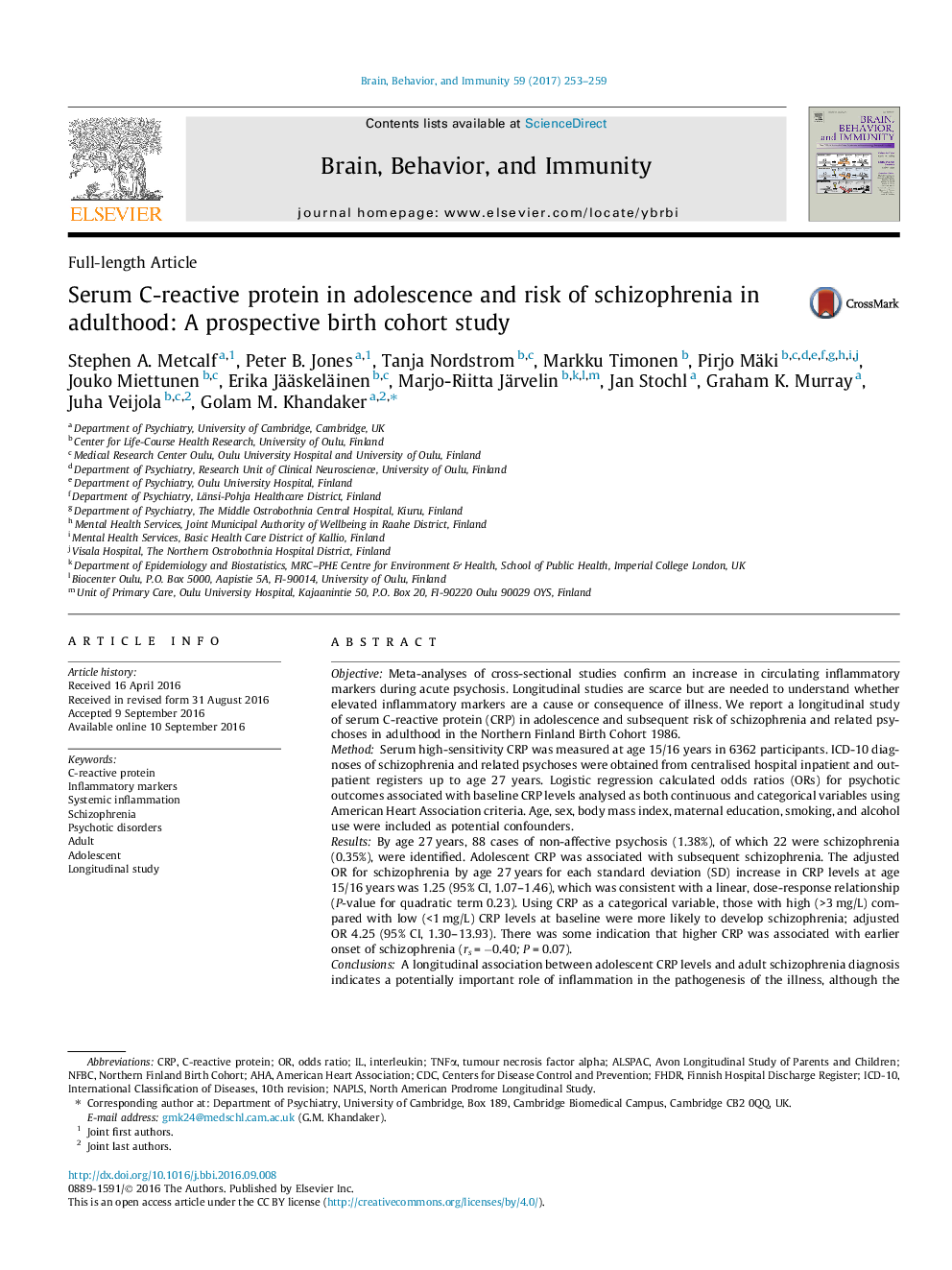| کد مقاله | کد نشریه | سال انتشار | مقاله انگلیسی | نسخه تمام متن |
|---|---|---|---|---|
| 5040944 | 1473908 | 2017 | 7 صفحه PDF | دانلود رایگان |

- This is one of the first longitudinal studies of serum CRP & subsequent schizophrenia.
- Elevated serum CRP in adolescence is associated with risk of adult schizophrenia.
- The CRP-schizophrenia association is consistent with a dose-response relationship.
ObjectiveMeta-analyses of cross-sectional studies confirm an increase in circulating inflammatory markers during acute psychosis. Longitudinal studies are scarce but are needed to understand whether elevated inflammatory markers are a cause or consequence of illness. We report a longitudinal study of serum C-reactive protein (CRP) in adolescence and subsequent risk of schizophrenia and related psychoses in adulthood in the Northern Finland Birth Cohort 1986.MethodSerum high-sensitivity CRP was measured at age 15/16 years in 6362 participants. ICD-10 diagnoses of schizophrenia and related psychoses were obtained from centralised hospital inpatient and outpatient registers up to age 27 years. Logistic regression calculated odds ratios (ORs) for psychotic outcomes associated with baseline CRP levels analysed as both continuous and categorical variables using American Heart Association criteria. Age, sex, body mass index, maternal education, smoking, and alcohol use were included as potential confounders.ResultsBy age 27 years, 88 cases of non-affective psychosis (1.38%), of which 22 were schizophrenia (0.35%), were identified. Adolescent CRP was associated with subsequent schizophrenia. The adjusted OR for schizophrenia by age 27 years for each standard deviation (SD) increase in CRP levels at age 15/16 years was 1.25 (95% CI, 1.07-1.46), which was consistent with a linear, dose-response relationship (P-value for quadratic term 0.23). Using CRP as a categorical variable, those with high (>3 mg/L) compared with low (<1 mg/L) CRP levels at baseline were more likely to develop schizophrenia; adjusted OR 4.25 (95% CI, 1.30-13.93). There was some indication that higher CRP was associated with earlier onset of schizophrenia (rs = â0.40; P = 0.07).ConclusionsA longitudinal association between adolescent CRP levels and adult schizophrenia diagnosis indicates a potentially important role of inflammation in the pathogenesis of the illness, although the findings, based on a small number of cases, need to be interpreted with caution and require replication in other samples.
Journal: Brain, Behavior, and Immunity - Volume 59, January 2017, Pages 253-259